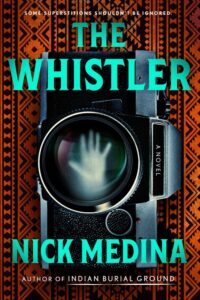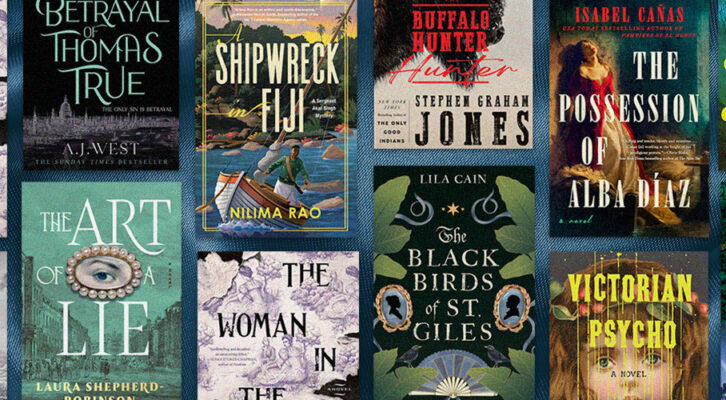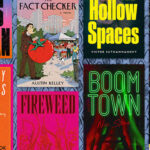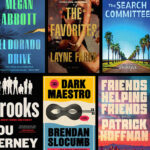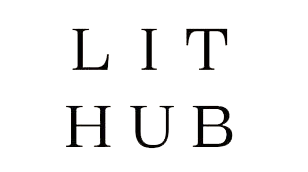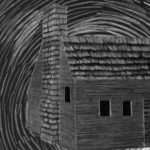A wandering witch with stitched up lips to keep her from casting spells. A teenage girl who might be a vampire. Creatures that come from the water to claim our dead. An old bracelet that conjures visions of a deadly being.
All of the above are plot points from books that, in one way or another, make use of folklore, legend, and myth to leave readers shaken. Whether a classic urban legend like The Phantom Hitchhiker, about a young woman who hitches a ride from a young man and then vanishes from his car, or a piece of contemporary folklore contemplating the capabilities of AI, these stories reflect the customs, traditions, values, beliefs, and concerns of the cultural group that gives them life.
They tap into fears. They teach valuable lessons. They extend essential warnings and provide instruction so that one may know the right and wrong way to live. With trepidation often serving as a key component of these stories, it’s no surprise that they land in the grim imaginations of writers who allow them to outgrow their short, word-of-mouth formats, ultimately letting them sit happy and fat in unsettling novels of their own.
As in my first two books, I put my spin on Native American folklore in my new novel, The Whistler, about a young man and the consequences he suffers after defying the traditional tribal tale that warns against whistling at night. In it, lurks a Two-Face character inspired by First American mythology. Through history, Two-Face has been depicted as a cannibalistic monster, a cruel woman who causes night terrors, and a killer with knife-like bones protruding from its elbows. Stories say you’ll either drop dead if you see the ghastly face on the back of Two-Face’s head, or you’ll be incapacitated until Two-Face comes back to claim (and most likely eat) you. Either way, the lesson remains: don’t trust that the face you see is the only face a person has.
With more lessons on tap, here—in no particular order—are seven books featuring folklore, legend, and myth that have worked their way under my skin, into my psyche, and into my writing as well.
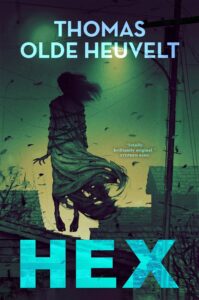
Hex by Thomas Olde Heuvelt
With her mouth and eyes stitched shut to keep her from casting spells and curses, Katherine van Wyler, also known as the Black Rock Witch, haunts the town of Black Spring, wherein the townspeople have isolated themselves to keep Katherine’s existence secret. All that changes, of course, when teens tired of the seclusion use social media to expose the witch to the world.
I had a nightmare while reading this one, of Katherine standing behind my bedroom curtains in the dead of night, whispering words I didn’t want to hear.

The Pallbearers Club by Paul Tremblay
Art Barbara has scoliosis and few friends. He starts The Pallbearers Club in high school to lend helping hands at the funerals of people who, it seems, are—were—as lonely as him. The club’s only other member is the mysterious Mercy Brown. The two become friends and as the story bounces between Art’s teenage years and his grownup attempt at writing about the strange—maybe supernatural—experiences he’s had, Mercy gets hold of the manuscript and adds her own take on Art’s memories, identifying inconsistencies and casting doubt on the thought that she might be a vampire.
The real Mercy Brown died in 1892, and Tremblay dishes out a delicious extension of her lore, which had friends and neighbors believing she was a vampire responsible for the consumption deaths of her mother and sisters after her body was exhumed and found to have barely decomposed with blood still in her heart.

White Horse by Erika T. Wurth
On the surface, Kari James’s life sounds pretty sweet. An Urban Native, she listens to metal, reads Stephen King, and drinks whiskey at her favorite bar, the White Horse, where cats wander in and out as they please. But Kari has trauma. Her mother left her when she was only two days old, and her best friend died of an overdose. After receiving an old copper bracelet from her cousin, Kari starts to see things—her mother’s bloody ghost, and an Indian bogeyman that changes shapes, smells like death, and preys upon women. Convinced that her mother is trying to tell her something about the past via the visions, Kari throws caution to the wind and goes full steam ahead to learn the truth about her roots. The result is a terrifying novel that highlights Native lore while never letting it overshadow real-world horrors.
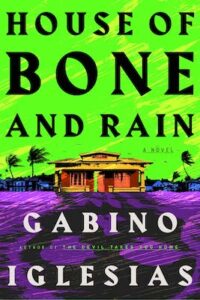
House of Bone and Rain by Gabino Iglesias
If you’ve read Iglesias before, you know he hits hard with ugly truths, vehemence you can feel, and heart (often with cracks running through it). His latest novel revolves around Bimbo and his friends, out for revenge after Bimbo’s mother is murdered. The story unfolds in Puerto Rico as a hurricane hits the island and wipes out electricity, running water, and countless homes. As if the eco-horror isn’t frightening enough, there are myths too. Tied to the water, they bring with them spirits and unnerving entities that subject Bimbo and his crew to situations that just might be more frightening and more dangerous than the people they’re pursuing.

The Bone Picker by Devon Mihesuah
There’s always the worry that I won’t like what I read when asked if I’ll provide a blurb for an upcoming book. That worry was quickly wiped away when I started reading this collection of twelve stories inspired by Choctaw folklore. Here’s what I wrote in support of it:
In this stunning assemblage of Native stories, Devon Mihesuah summons the equally magnificent and monstrous abilities of age old gods, demons, witches, and other mythological tribal entities to right wrongs, win justice, protect the disempowered, and punish those who act in evil ways. Though these stories sprout from ancient roots, they strike a balance between history and the here and now, making them as vital today as traditional tales were centuries ago. Compelling, empowering, and dire, this collection induces shivers while masterfully highlighting the importance of Native storytelling.

The Fisherman by John Langan
The story of a man who lost love, who meets another man who lost love (and more) as well. The two strike up a friendship that revolves around fishing, and ultimately head to a creek that they’ve been warned to stay away from. The warning itself comes in the form of a dark legend told by a man the two friends encounter in a diner. The man speaks of a woman who came back from the dead, and a fisherman who can grant visions of lost loves. But all isn’t as it seems.
Langan’s gorgeous storytelling intensifies the themes of grief and loss in this tale of cosmic horror.
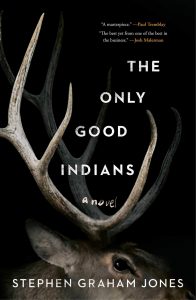
The Only Good Indians by Stephen Graham Jones
Years after four Blackfeet men break from tribal tradition and kill an off-limits elk, they become the hunted when an elk spirit seeks revenge. Exploring themes of Native identity, trauma, guilt, and historical injustices, this horror masterpiece brings lore to life so viscerally that I had to set the book down for a breath. To me, a response like that is a very good thing.
***


